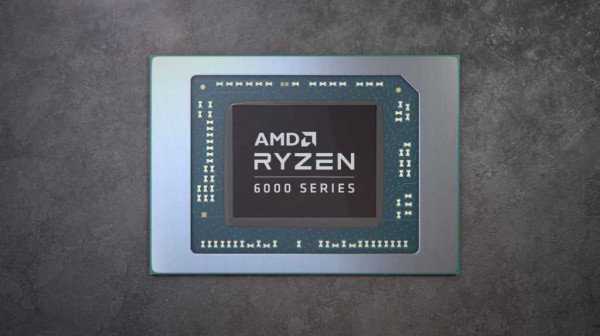If you look closely at the CPU industry, there is an interesting trend. In some periods, one company completely dominates the market. There is talk of no one being beaten on desktop, laptop and mobile.
After some time, a CPU maker that has developed power somewhere appears. And the two companies are in fierce competition. During this period, various CPUs are released. Consumers can choose with pleasure. However, after a certain period of time, one company dominates the market again. And the rest of the company's products are slowly disappearing from the market. This phenomenon is repeated.
Now, Intel's dominance is over and AMD is fiercely competing with Intel in the desktop CPU market. Apple's CPUs M1 and M2 designed based on ARM were also released. At the same time, in the CPU market, in addition to computational performance, a new competition is starting for “power-to-performance” including GPU acceleration capability.
In the midst of this, the new CPU introduced by AMD is receiving considerable attention. Laptopbench.com tested the AMD Ryzen 6800U and announced that the Ryzen 6800U surpassed the Apple M1, which was the best in terms of “power-to-performance”. This is the result of comparing the 12th generation Intel laptop and Apple M1 MacBook using the Asus ZenBook S 13 OLED laptop.
AMD CPU was 35-40% of Apple M1 processor performance in Cinebench R23 single-core test. Still, it scored 7-9% higher than Intel's 12th generation. However, in the case of multi-core, it showed performance comparable to that of Apple's M1.
In the Cinebench R15 multi-core test conducted additionally, in an environment where the built-in monitor was turned off and only an external monitor was used, the result was more than 13% higher than that of the Apple M1. According to these results, this CPU can be rated as the best CPU for Windows laptops at the moment.
But is this just a temporary result of one AMD product? I don't think so. At the AMD Financial Analyst Day held on June 9th, AMD confirmed its CPU architecture plans for the next several years. According to this, they will release Zen4 and Zen5 architecture CPUs by 2024, including Zen4 and Zen5 with V-cache.
AMD Chief Technology Officer Mark Peppermaster said that the Zen4 architecture's IPC improvement is between 8% and 10%, and the overall single-threaded performance improvement is more than 15%. He also said that the new architecture will show more than 25% overall performance compared to Zen3 and an overall performance improvement of more than 35%. The extent of this improvement is estimated to exceed the extent of improvement due to microprocessing that rivals Intel or Apple will naturally obtain. It means that pure AMD's technology is going up that much.
What about GPUs? AMD RDNA3 architecture is said to provide more than 50% overall ratio compared to RDNA2. AMD has previously claimed that the RDNA2 is more efficient than the Nvidia Ampere GPU architecture by comparing the 6950XT to the 3090 Ti. AMD's growth is a sign that fierce competition will begin in this field as well.
Where is the driving force behind AMD's lead over Intel to Apple in power/performance ratio? The answer is simple. It's because of good selection and concentration. AMD thoroughly focused on the price-to-performance market when Intel could not focus on either side of the desktop, which wanted absolute performance, the mobile market, who wanted performance-to-power ratio, and consumers who wanted performance-to-price ratio.
If the price is similar, AMD's product is a strategy to gain an edge in the competition. As a result, AMD has a complete advantage in the game console market. It survived by showing a presence in some laptop markets that value cost-effectiveness. It became a clear competitor in the GPU market, where Nvidia was dominant in performance.
It is the result of creating a market that sells reliably and continuously investing the profits obtained from it again in microprocessing and technology. This is in contrast to Intel, which once snooped on the smartphone market and was more concerned with marketing and shareholder dividends than technology. These results have produced the result that the M1, which Apple has put so much effort into, outperforms its flagship performance in terms of overall performance.
This is the reason why I am naturally interested in the AMD CPUs to be introduced in the future. It dominates the game console market and is taking over the Intel market in desktops as well as laptops. Going further, it may emerge as a competitor to Intel in the server market. AMD is also working with Samsung on GPUs to compete with Apple's Bionic chips. I hope that the competition among companies will make consumers more happy.
 |
김창훈 기자 changhoon8@gamevu.co.kr
<저작권자 © 게임뷰, 무단 전재 및 재배포 금지>

![[현장] 딸기 맛집 인정, '쿠키런: 킹덤' 팝업 카페 '크레페 크래쉬' 오픈](/news/photo/202404/32305_86009_516.jpg) [현장] 딸기 맛집 인정, '쿠키런: 킹덤' 팝업 카페 '크레페 크래쉬' 오픈
[현장] 딸기 맛집 인정, '쿠키런: 킹덤' 팝업 카페 '크레페 크래쉬' 오픈




![[포토] 던전에서 오프라인으로 출몰한 '나 혼자만 레벨업:어라이즈'](/news/thumbnail/202404/32347_86168_2143_v150.jpg)
![[LCK 현장] 젠지, 풀세트 접전 끝에 T1 누르고 우승컵 차지](/news/thumbnail/202404/32334_86131_2751_v150.jpg)
![[LCK 현장] 젠지 vs T1, LCK 스프링 결승에 나선 코스튬 플레이어들](/news/thumbnail/202404/32327_86118_449_v150.jpg)
![[LCK 포토] 결승 진출전에서 만난 두 팀, 한화생명 vs T1](/news/thumbnail/202404/32308_86071_2351_v150.jpg)



